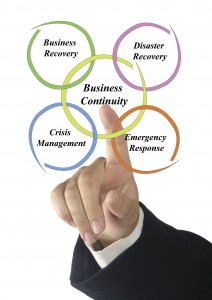Moving to Disaster Recovery in the Cloud
Author: Michael Trantas, Sr. Solutions Architect
With traditional disaster recovery solutions, businesses have to spend quite a bit of time determining what their budget can support and make the difficult decision of determining which applications and servers will be covered in a failover situation. While users of automation tools, such as VMware’s Site Recovery Manager, have in-house managed failover and failback plans, cloud-based disaster recovery as a service (DRaaS) is quickly gaining momentum.
Building on the foundations of cloud-based computing, DRaaS allows businesses to protect their environments without the expense and management burden of replicating to a secondary site owned and operated by core IT staff. Without the need for a large capital investment and flexible subscription terms, it is becoming attractive to many Small and Medium Businesses. Just think about it – there is no need to be concerned about software upgrades and hardware maintenance, everything is taken care of on the back end, by the provider and is transparent to the end-user. DRaaS also makes it possible to protect satellite office sites without additional capital expense investments and often, lower operational expenses.
With cloud-based DRaaS solutions, the caliber of support can make a big difference in the confidence of recovering your infrastructure too. Services like Microsoft’s Azure, VMware Air and Amazon’s Cloud offer top of the line certified expertise for help with almost any Disaster Recovery product. Many of these options can provide a high level of redundancy and reliability, all of this with minimal capital expenditure.
The big question is WHY? Why move disaster recovery services to the cloud and what advantages does it present for businesses?
There are a number of factors:
Cost savings – Costs are passed on to the DRaaS infrastructure provider – companies can realize significant cost reductions (hardware/power/maintenance, etc.) when outsourcing their DR infrastructure.
Reduced recovery time – Your DRaaS provider should have a SLA (Service Level Agreement) that guarantees your recovery time.
Ease of management – There is no need to dedicate time or a specific employee resource to managing DR systems. This responsibility can be offloaded to a DRaaS provider.
Security – Infrastructure and changes to client infrastructure are strictly managed by a security team. This significantly reduces the chance of a random employee making unwanted/unknown changes; eliminating risk.
DRaaS can be a reliable demonstrated technology and is rapidly gaining popularity. For more information, or if you would like to explore options for Disaster Recovery as a Service, please contact me at mtrantas@helient.com.
The author, Mike Trantas, is a Senior Solutions Architect for Helient Systems LLC. He is an industry leading systems architect, responsible for the design and implementation of storage and virtualization technologies, datacenter/network/server infrastructure, XenApp, backup strategies, SQL deployments as well as fault tolerance and disaster recovery planning. His technical expertise including EMC, NetApp, HP, Dell storage arrays, VMware / Xen / Microsoft hypervisors, datacenter design and management, VDI and Active Directory.

